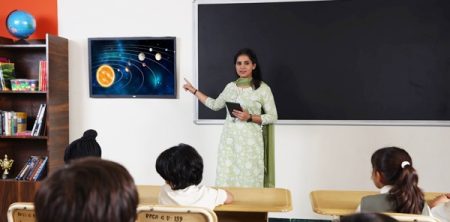In today’s digital era, the role of a teacher has evolved dramatically from the traditional chalk-and-talk approach. Innovative educators now incorporate various multimedia resources, including kids animated shows, to create engaging learning environments that resonate with young minds. This strategic integration recognizes children’s natural attraction to animated characters and colorful visuals, transforming potentially dry academic concepts into memorable learning experiences.
The relationship between education and entertainment continues to strengthen as research validates the effectiveness of visual storytelling in knowledge retention. Modern teachers understand that when children connect emotionally with educational content, they’re more likely to internalize lessons and apply them in real-world scenarios. By carefully selecting age-appropriate animated content that aligns with curriculum objectives, educators create a bridge between entertainment and academic growth.
Educational psychologists have long recognized the power of multimodal learning—combining visual, auditory, and kinesthetic elements to enhance comprehension. Animated shows designed with educational intent provide precisely this combination, offering colorful visuals, clear dialogue, and opportunities for interactive engagement. When teachers incorporate these resources into lesson plans, they’re not simply entertaining students but activating multiple learning pathways simultaneously.
The effectiveness of animation in education stems from its ability to simplify complex concepts. Abstract ideas that might confuse young learners when presented textually become accessible through visual metaphors and relatable characters. Consider how difficult it might be to explain the water cycle to first-graders using only words, compared to showing an animated sequence where water droplets transform and travel through different environments, guided by friendly character narrators.
Beyond academic content, quality animated programming often embeds valuable social-emotional lessons within storylines. Conflict resolution, empathy development, cultural awareness, and emotional regulation are frequently explored themes. Teachers who incorporate these shows can use them as launching points for meaningful classroom discussions about personal growth and social skills—areas increasingly recognized as crucial for holistic child development.
Parents sometimes express concern about screen time in educational settings, but research indicates that curated, purposeful viewing differs significantly from passive consumption. When teachers actively mediate the viewing experience through pre-viewing discussions, guided watching, and post-viewing activities, the educational value multiplies. The key lies not in the animation itself but in how educators frame, contextualize, and extend the content through supplementary learning experiences.
Many teacher preparation programs now include media literacy components that help educators evaluate animated content for educational merit. Criteria often include accuracy of information, age-appropriateness, diversity representation, pacing suitable for cognitive processing, and alignment with educational standards. This professional training helps teachers become discerning consumers who can identify high-quality animated resources among the vast options available.
The technological landscape continues to evolve, with interactive animated learning platforms now offering personalized learning pathways based on individual student progress. Forward-thinking teachers leverage these adaptive systems to provide differentiated instruction, addressing the unique needs of diverse learners in their classrooms. These platforms often incorporate gamification elements that maintain engagement while providing valuable assessment data to inform instructional decisions.
Collaborative viewing experiences foster community within classrooms as students share reactions and insights about animated content. Teachers report that even reluctant participators often contribute to discussions about favorite characters or surprising plot developments. This inclusive atmosphere creates opportunities for peer learning and helps children practice articulating thoughts and opinions in a low-pressure context.
The global accessibility of animated content also provides teachers with powerful tools for multicultural education. Shows produced in different countries offer authentic windows into diverse cultural perspectives, helping children develop global awareness and appreciation for different worldviews. This exposure proves particularly valuable in culturally homogeneous communities where students might otherwise have limited interaction with global diversity.
While nothing replaces the irreplaceable human connection between teachers and students, thoughtfully selected animated content serves as a valuable supplementary resource in comprehensive educational approaches. The most effective teachers view these shows not as substitutes for instruction but as powerful tools within their pedagogical toolkit—resources that can capture attention, simplify complexity, and spark curiosity in ways that enhance rather than replace direct instruction.
As educational technology continues advancing, the relationship between teachers and animated content will likely strengthen further, with increasingly sophisticated integration between traditional teaching methodologies and engaging digital resources. The educators who thrive will be those who maintain a balanced approach—embracing innovation while remaining grounded in time-tested educational principles that prioritize meaningful human connections.

